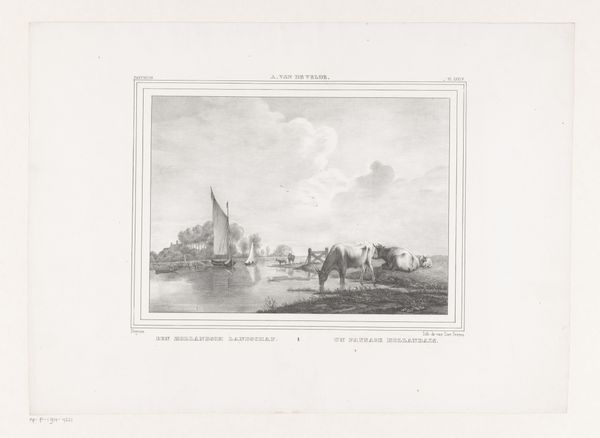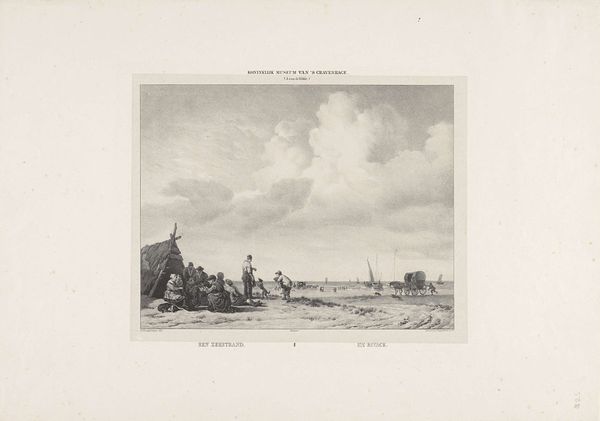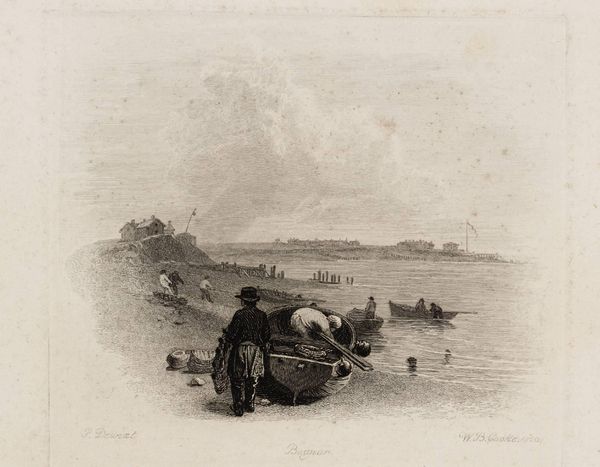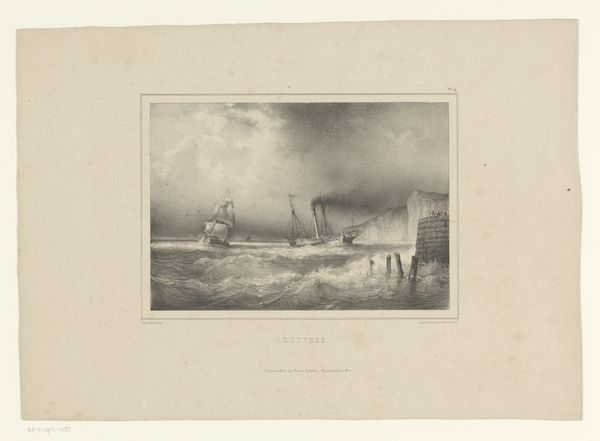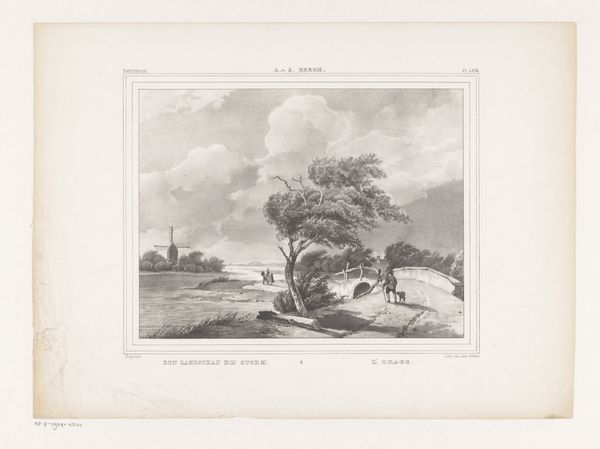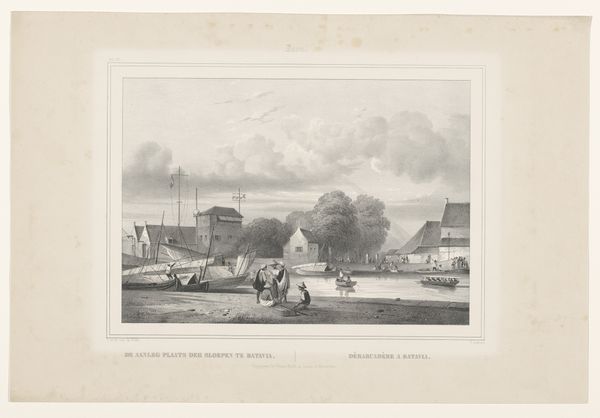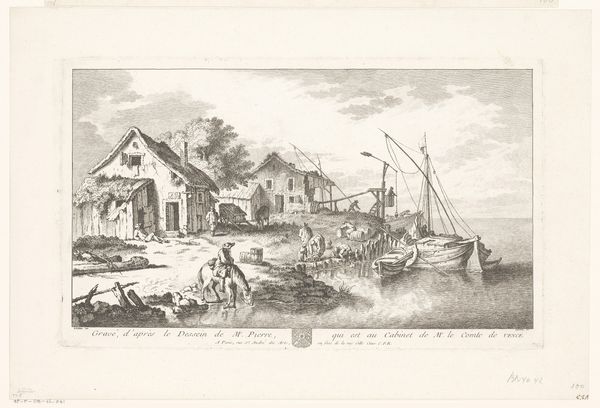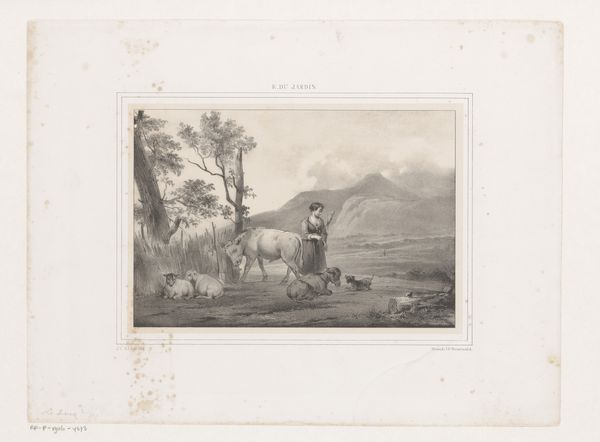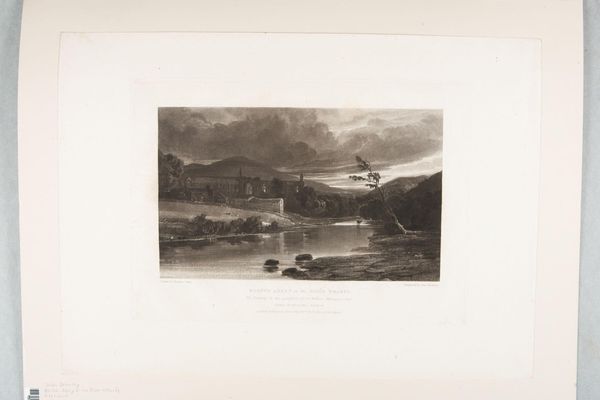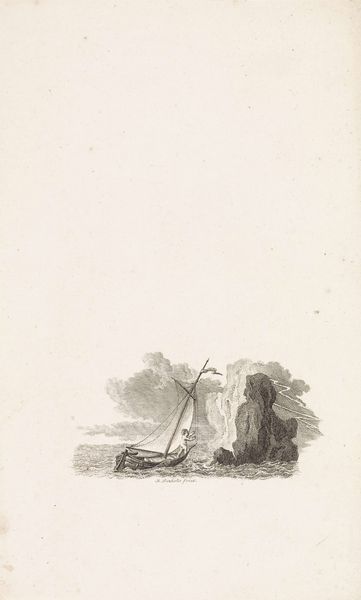
Dimensions: height 113 mm, width 178 mm
Copyright: Rijks Museum: Open Domain
Curator: Looking at this engraving titled *Children with a Sledge on the Ice*, created around 1854, what strikes you? Editor: It's stark. The monochromatic palette lends itself to a sense of isolation despite the presence of figures. The contrast is fascinating—the etched lines capture both the fragility of the ice and the stoicism of the landscape. Curator: Indeed. Created by Dirk Jurriaan Sluyter after A.F. Kurckman, it showcases the Romanticism movement's engagement with the natural world. What does this domestic scene unfolding on this expanse of ice evoke for you? Editor: I notice that the windmill in the distance immediately situates it. It's a cultural touchstone. We have figures pushing this curious sled along, but also these tree stumps—suggesting a before and after—perhaps echoing something about time and change. Curator: The placement of that windmill, an emblem of Dutch ingenuity against the vast winter landscape is certainly symbolic. These winter scenes are deeply ingrained in Dutch cultural memory. These children almost become allegorical representations of Dutch perseverance, pushing forward even amidst harsh conditions. The inclusion of genre painting elements with a domestic subject contributes to its narrative. Editor: It’s intriguing that an everyday scene has been elevated to such an emblem, as you describe. Technically, I admire how the texture of the ice, with its myriad etched lines, gives it such depth and solidity against an otherwise simple landscape. There's an interplay between reality and artifice here, even the tonal graduations across the sky suggest depth beyond the engraving. Curator: The everyday contains its own symbolic resonance. We, the viewers, can look back across generations through the images as records of a changing landscape or life itself. That makes it something beyond genre. It tells us about community, memory, and the resilience of hope. Editor: I see your point. And I'm reminded how critical close observation—that of the artist but also our own—is to reveal even the smallest gestures within a structure. Curator: Absolutely, and the work does reveal multiple interpretive levels each time, reminding us about culture and community from a personal lens.
Comments
No comments
Be the first to comment and join the conversation on the ultimate creative platform.
